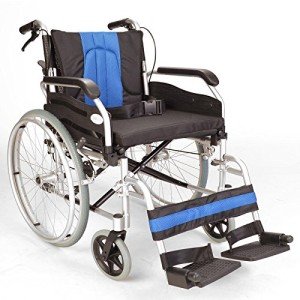Extra Wide Bariatric Wheelchair With 24" Seat
Frame
Wheelchairs are generally produced in a basic width of 16" (narrow grownup), 18" (basic grownup) or 20" (broad adult). Nevertheless, some wheelchair users need a seat width wider than these requirements. These additional broad bariatric wheelchairs are usually fitted by a professional and based on the user's measurements.
In order to get the most comfy and safe and secure ride for passengers, it is essential that wheelchairs are correctly sized. This implies that the wheelchair needs to be able to accommodate the user's size while having the ability to navigate in tight areas. This is why BriteLift offers personalized cars to transport wheelchair passengers. This consists of vans that can securely drive and steer big wheelchairs, permitting them to feel safe and comfy in every ride. This is the only way to provide the most effective transportation for wheelchair guests.
Seat
Bariatric wheelchairs are bigger than standard wheelchairs and are developed to accommodate individuals who are much heavier or larger. This extra wide bariatric wheelchair from Medline features a 24" seat and a carbon steel frame with rust- and chip-resistant chrome plating. The wheelchair has tool-free push-button adjustable footrests and easy-to-clean vinyl upholstery. It can support approximately 500 pounds.
When choosing on My Mobility Scooters , it is essential to measure the user sitting normally on a flat surface area throughout their widest part of the lap which is normally their hips. It is likewise recommended that you utilize a yardstick instead of a determining tape as it tends to offer a more precise measurement. If the user will be wearing a winter season coat then an additional 2" ought to be contributed to the measurement of their seat width.
Weight Capacity
A bariatric wheelchair is usually larger and much heavier than basic wheelchairs. This is why they require more careful maneuvering. Drivers need to be trained in managing these guests. Furthermore, vehicles require to have sufficient room for these chairs as well as ramps and wheelchair lifts. In addition, they need to understand how to arrange these trips in advance.
When picking the chair width, it is necessary to measure the user's largest point in the seat, which is generally the hips. Numerous wheelchair manufacturers also offer a yardstick that can be used to assist with this measurement. When determining an individual's width, it is best to take the measurement directly across and not cover the tape around their hips which can provide a false reading.

In some cases, the largest part of an individual's thighs may be larger than their hips so this must be thought about when selecting the chair width. In these circumstances, it is in some cases essential to add an extra 2" to the chair width.
In basic, the weight capacity of a bariatric wheelchair need to not be gone beyond under any circumstances or major injury may result. When using the chair, always be sure that it is on a steady and level surface with front casters pointing forward and wheel locks engaged. In addition, never ever lean or shift the center of mass while sitting in the chair.
